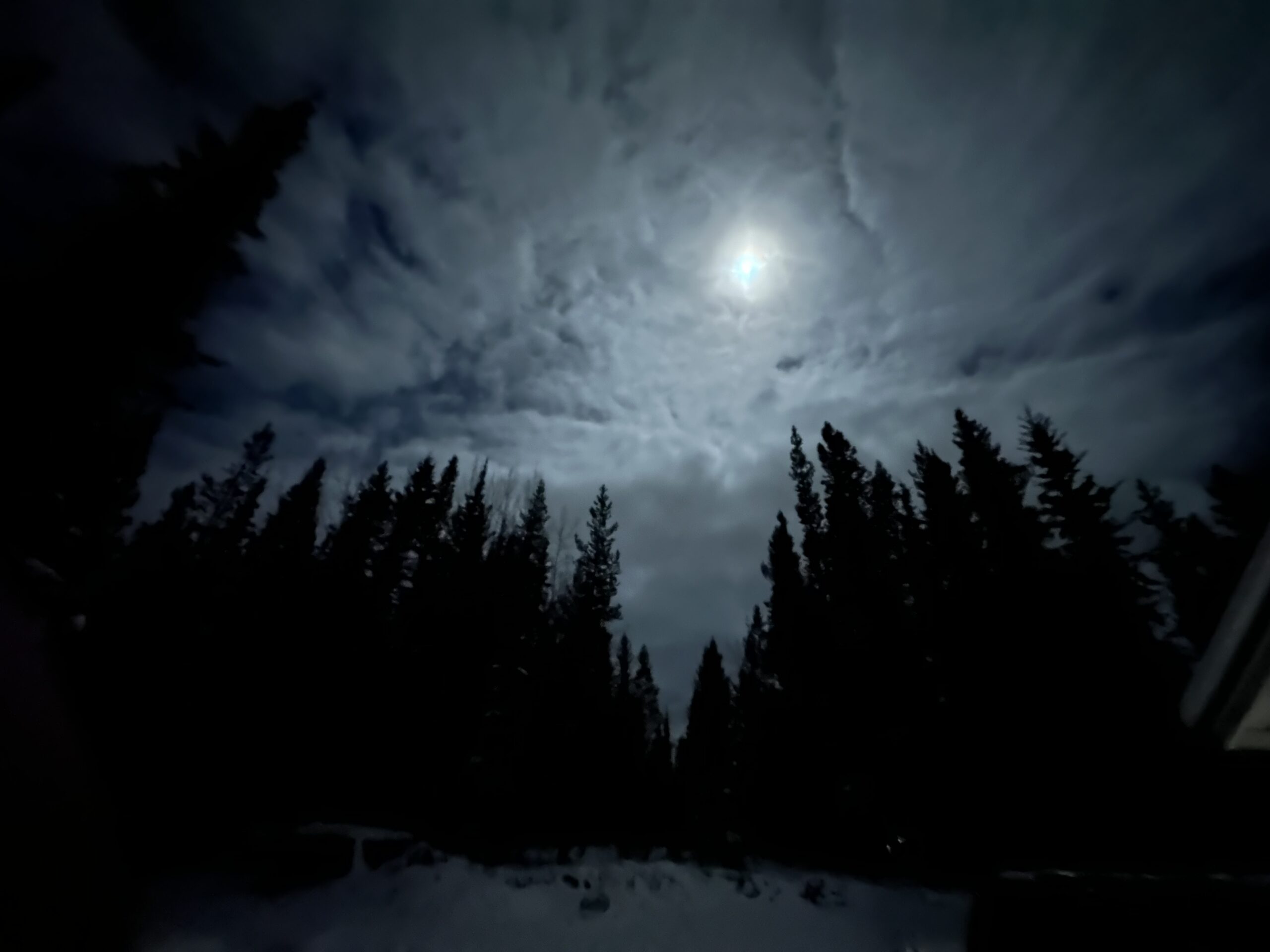Beautiful Tātl’ā Winter Nights as we enter into 2023
Whether you call it Tātl’ā, as it was known long before Europeans arrived and called it Dease Lake or not, it is a place of exceptional and wild beauty throughout the entire year. It has been a beautiful Tātl’ā winter as we enter 2023.
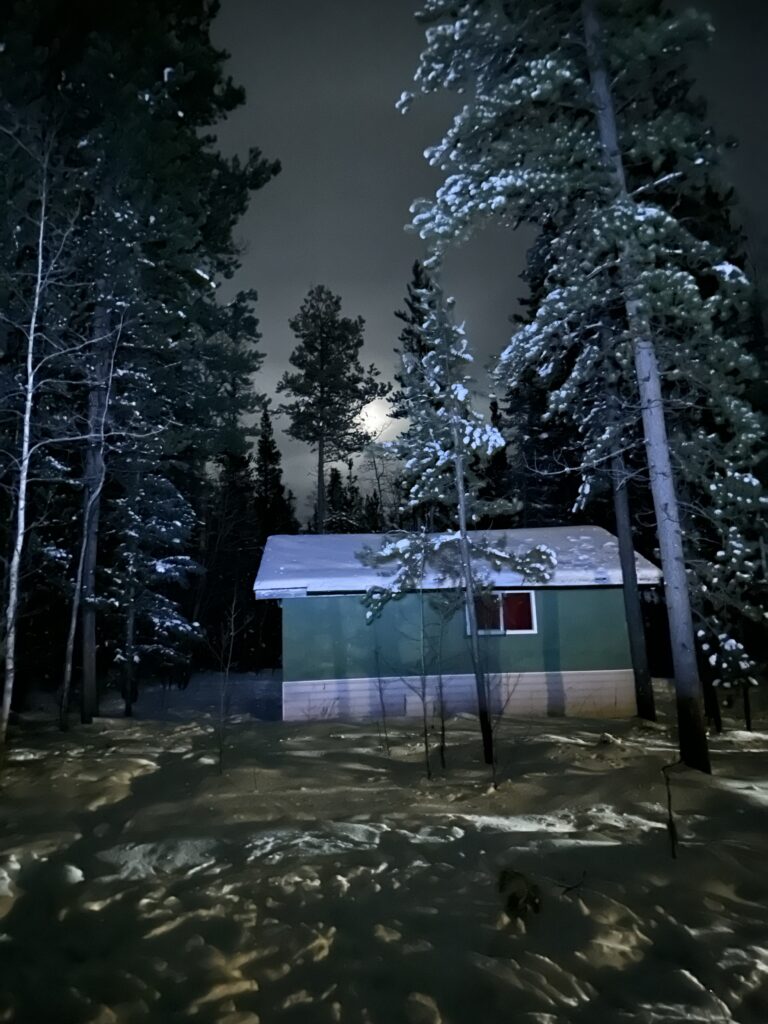
The nights in January are just one part you don’t want to miss if you’re privileged enough to visit the Stikine Valley this time of the year. Many of the nights are clear or slightly cloudy with a bright moon. Even in the middle of the subarctic night, it is bright across the snow-covered forest and trails under a full winter moon. Long shadows from the spruce and pine stretch across the ghostly whiteness of the ever-present snow.
Such Tātl’ā winter nights are a photographer’s dream, should you be willing to bundle up a little more against the sometimes bitter cold. It has been down to -48 Celsius this winter, but January has not been as cold as December so far. Most nights have been right around -15.
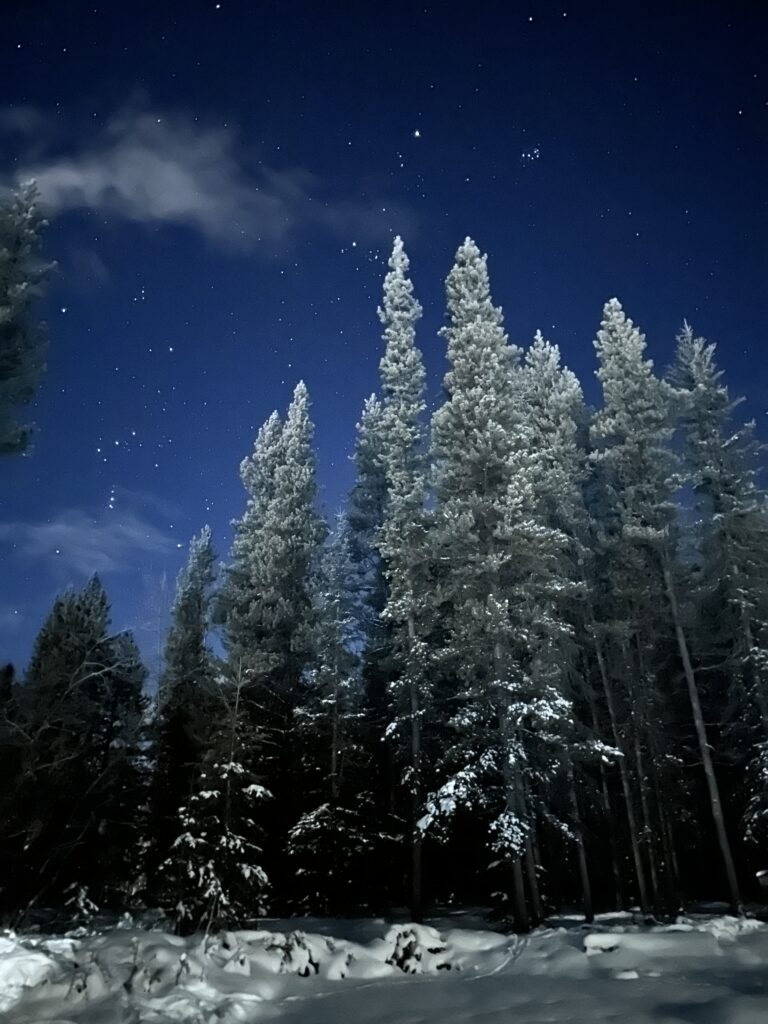
You need a good quality digital camera to get the most out of shooting by moonlight unless you really want to work hard. A good digital camera will let you quickly capture the shots you want before the scene changes. When you shoot by moonlight, it changes quickly.
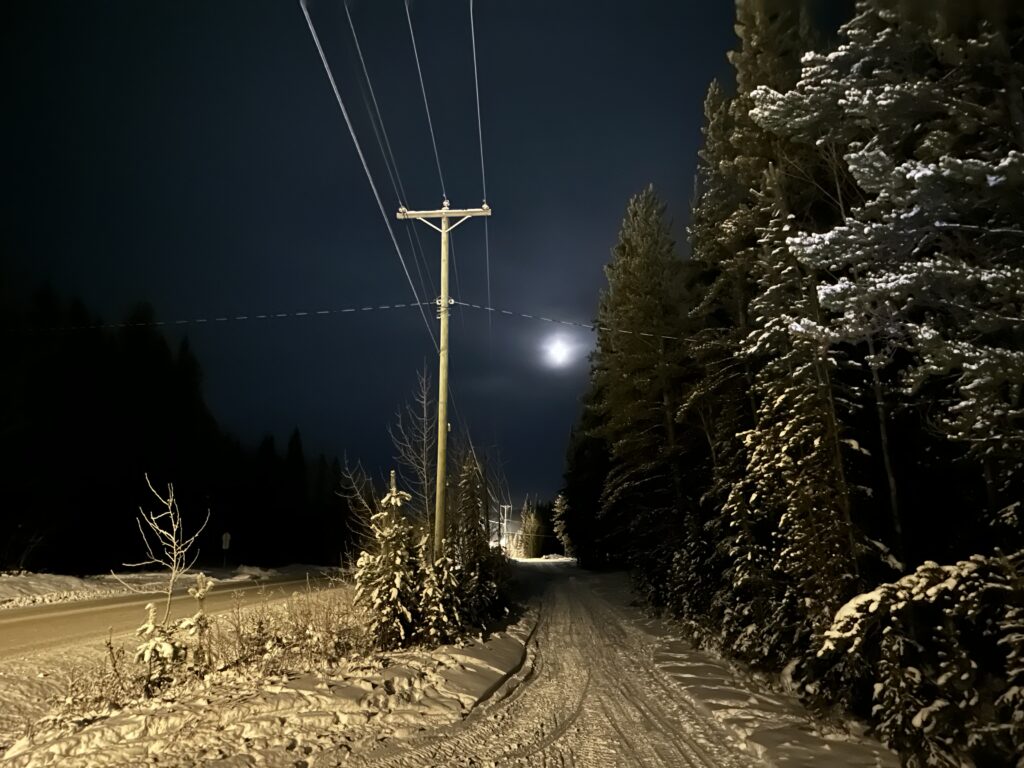
The moon first peeks over the horizon in the east, then quickly arcs to the south where it rises high in the sky. From there, it soon makes its way behind the mountain in the west. So, you want to be able to capture every shot as soon as you can.
One of the best cameras for this these days is – surprise, surprise – the iPhone14. It does a fantastic job in low light of capturing perfect stills. It does have a small learning curve, but I am really enjoying what it is capable of. In the photography classes I’ve taught, I’ve pointed out to my students that while the cameras they bring are often pretty nice, their modern smartphones are also able to capture exceptional images. They may have small lenses with small sensors, but the glass that is used for their lenses and the AI (artificial intelligence) programmed into them alongside their excellent sensors will capture images that can often compete head to head with the finest high-end modern digital cameras.
Every photo taken in this post is completely untouched and was taken with an iPhone 14.
One of the things I find very exciting about the iPhone’s AI is its ability to take clear photos regardless of whether you shoot solely by moonlight, or if there are one or more other light sources going on. One of the problems shooting at night has always been interference from multiple light sources, which usually end up make the resulting photo overexposed in one area and grossly underexposed in another.
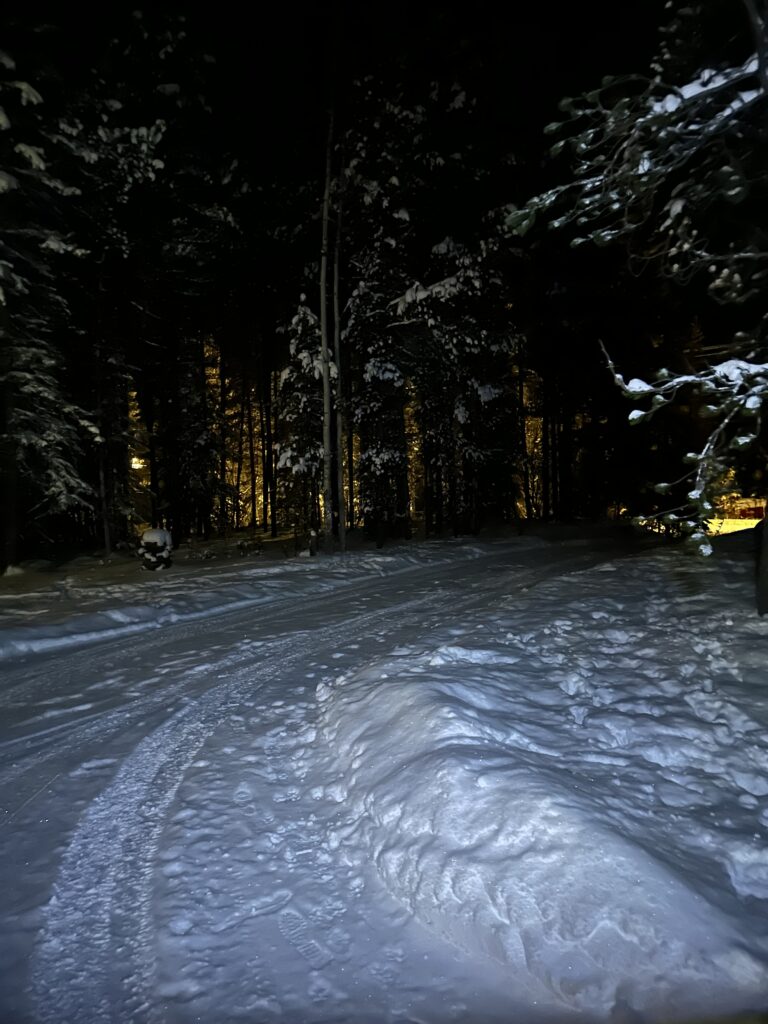
The iPhone has a “moon” function, which can be set for from one to several seconds. It’s important to hold it as still as possible, but it’s not critical. The camera will analyze the light in the scene for a few moments, then snap the best photo, allowing it to take the photo the way the human eye sees it, rather than cutting out everything except the most well light region.
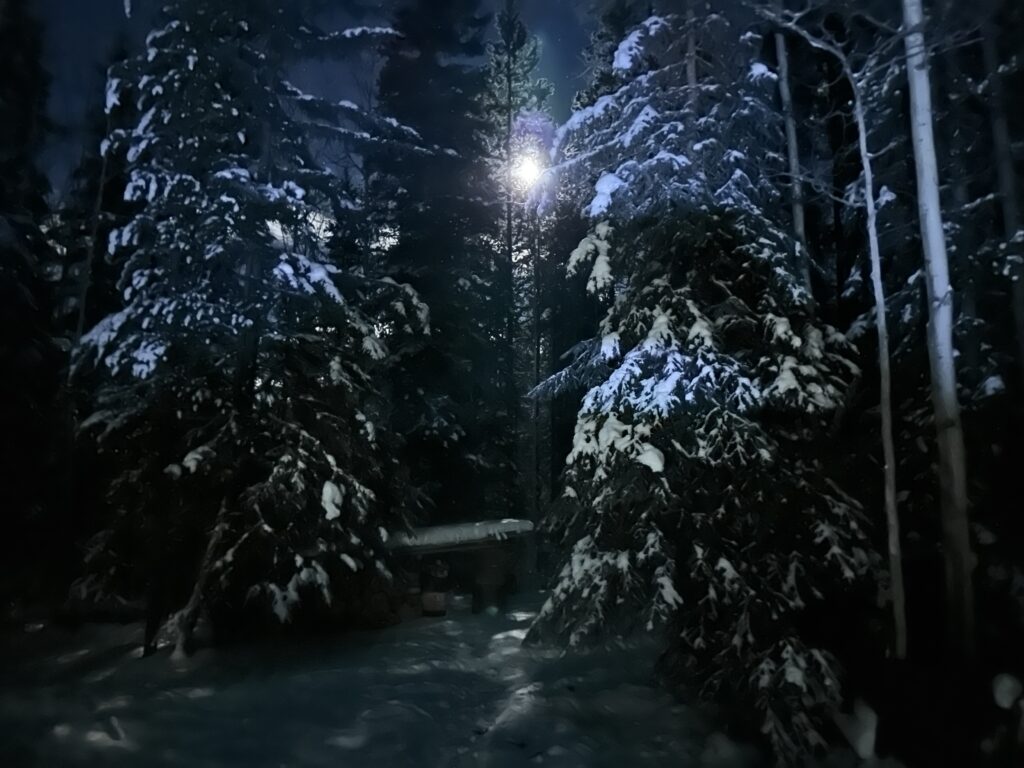
I love seeing the Tātl’ā winter moon as it rises through the trees. Sometimes it is a sharp, well-defined, well-rounded globe between the snow-covered spruce and pine trees. Other times, it looks like the “ghostly galleon cast on cloudy seas” of the famous poem, “The Highwayman.” Either way, it’s very beautiful.
